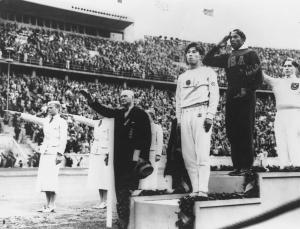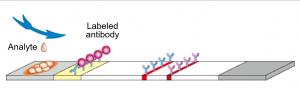In the past, we have seen many media reports relating indie bands and hipster culture to Hongdae Street area. So, we all expect that the Hongdae Street area would have many unique styles. Instead, street vendors, large brand clothing stores, and franchise stores, which can be seen in any downtown area welcome us.
Gentrification is the process of changing the character of a neighborhood through the influx of more affluent residents and businesses. It is a common and controversial topic in politics and in urban planning. Gentrification often increases the economic value of a neighborhood, but the resulting demographic change is frequently a cause of controversy. Gentrification often shifts a neighborhood's racial/ethnic composition and average household income by developing new, more expensive housing and businesses in a gentrified architectural style and improving resources.
I visited places in Seoul where gentrification had occurred to see what has changed and whether this social phenomena had been beneficial for the local community.
1. Myeong-dong
Myeong-dong is the first place where gentrification took place in Korea. It was in the Japanese colonial era that Myeong-dong began to become a busy street. In the development era, Myeong-dong was the first gateway to Western fashion. Tailor shops, shoe shops, and beauty salons began to open and developed into spaces leading the latest fashions. Until the 1970s, it was the center of various arts and music. There were many art-related facilities, such as music appreciation rooms, painting shops, galleries, and small theaters. However, as it began to attract attention as a busy street in the 1970s, Myeong-dong’s land prices have risen. Artists have moved their homes to other places due to high rents and number of people visiting the Myeong-dong declined because of the development of Gangnam and Yeouido.
Since then, foreigners who visit Myeong-dong have rapidly emerged as the main consumers, transforming it into a space mainly for tourists. To this day, Myeong-dong is famous for having the highest land prices in Korea. One example is the Nature Republic Myeong-dong World Store, which is said to have the highest building rent in Korea.
2. Insa-dong
Insa-dong was home to many officials and scholars during the Joseon Dynasty. It was a spot where many government agencies were located. One of the government agencies was the Dohwaseo, Korean Royal Academy of Painting, where ceremonies, events, and portraits were carried out. In the meantime, Insa-dong naturally attracted artists and people who bought and sold painting supplies, forming a shopping district. In the 1960s, antique stores and galleries began to open. As Insa-dong began to become a mecca for artists and art lovers, many traditional tea and traditional food restaurants began to open.
However, this place did not avoid gentrification either. The pyogubang (stores where they restore artworks) and galleries, which used to be the backbone of Insa-dong, are being pushed out, and various cosmetics stores, franchise chains, and cheap souvenir shops have taken up spots. Even merchants who have been going for decades have left Insa-dong.
3. Apgujeong Rodeo Street
Apgujeong Rodeo Street was a commercial district made popular by young people in the 1990s. At that time, Apgujeong Rodeo Street served as the center of fashion with the arrival of numerous clothing stores. In addition, Hyundai Galleria Department Store, which still comes to mind when we think of Apgujeong, has attracted people by acting as a landmark of the commercial district, adding strength to the revitalization of Rodeo Street. Therefore, Apgujeong Rodeo Street is a cultural and commercial district created by young people who led the trend of the 1990s. The culture that originated from Rodeo Street is called the "Orange Tribe," which can be seen as a generation that found it rewarding to spend time and play here for the first time.
Apgujeong Rodeo Street, which was called the cultural center in the 90s, was affected by gentrification in the 2000s. With the explosive rise in rents, store owners of Rodeo Street stores moved to nearby busy streets where rents were cheaper, and large franchises and overseas luxury brands took their place. It began to lose its local characteristics and lost its attractive commercial status as visitors fell off.
4.Hongdae
Hongdae was a residential area until the 1980s, then a distinctive culture was formed with the establishment of artists' workshops centered on art and music. In the 1980s, shops began to move to Hongdae from the Sinchon area where gentrification had taken place, and it’s developed into a busy area through its underground culture. In the 2000s, rent began to rise and popular entertainment culture was introduced in Hongdae. In the meantime, artists and small business owners who formed the culture of Hongdae began to be pushed to nearby areas because they could not afford the rising rent. In the 2010s, gentrification occurred again in the area where they migrated, resulting in continuous relocation to nearby places like Sangsu-dong.
The advantage of gentrification is that improvement on urban infrastructure and the inflow of capital will clearly show the effect of reviving the local economy. Some of the effects are decreased crime in the low-income residential areas and stabilizing poor areas.
However, tenants and merchants living in the area must leave due to rising rents or worry about being kicked out, and due to rising real estate prices, the number of "homeless" people increases. Also, the area loses its cultural diversity and identity after the investment capital floods in. In addition, gentrification in Korea has become a social problem with real estate assets and external investors, who have played little role in revitalizing the affected areas while taking profits.
Kim HyunRim arnoldkim123@naver.com
<저작권자 © 홍익대영자신문사, 무단 전재 및 재배포 금지>





